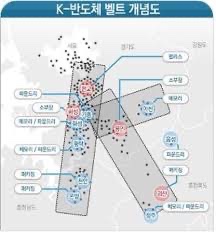

韓國:半導體人才缺乏危機:
-台灣每年確保10,000名人力資源,韓國祇有1,400-
韓國半導體發展:
韓國被列為全球半導體強國。
但是,要維護有許多挑戰。
韓國半導體公司:
無論是大公司還是中小型公司,都存在人力資源短缺的問題。
它還面臨全球供應鏈風險。
“十大問題”:
中央日報綜合這些意見,評選出“10大問題”
▼ 擴大半導體人才培養部門的能力
▼ 放鬆對新半導體工廠建設和擴建的管制
▼ 投資研發稅收抵免
▼ 加強對系統半導體領域的支持
▼ 支持全球供應鏈重組
▼ 海外公司的併購支持和國內吸引力
▼ 擴大半導體研發國策業務
▼ 加強對國內半導體材料和零部件企業的支持
▼ 汽車用半導體材料、零部件和設備的國內生產
▼ 確保人工智能等下一代半導體核心技術
人力資源培訓刻不容緩:
韓國
特別是未來10年將短缺約3萬人。
培訓半導體人力資源是最緊迫的問題。
台灣
10年來,我們每年培訓10,000名專業人力資源。
中國
在過去的 10 年裡,每年生產 200,000 人。
中央日報 | 中央日報
https://s.japanese.joins.com/JArticle/291256?sectcode=320&servcode=300
Samsung:SK Hynix TECH+
https://news.mynavi.jp/techplus/article/20220510-2342451/
Samsung Electronics and SK Hynix Seriously Understaffed
Samsung Electronics and SK Hynix
are planning to train 1,160 future employees for five years to come by joint curricula with colleges.
This is because the manpower shortage in the industry
until 2031 is estimated at no less than 30,000 persons and the domestic graduate student output stands at 150 or so a year.
Samsung Electronics
launched its curriculum at Yonsei and Sungkyunkwan Universities last year and KIAST and POSTECH this year.SK Hynix
did so at Korea University last year and Sogang and Hanyang this year.Approximately 360 persons
are supposed to graduate from the seven a year.The figure is not enough for both,
and they are trying,
with the Korea Semiconductor Industry Association, to persuade Seoul National University to join next year.– Businesskorea
http://www.businesskorea.co.kr/news/articleView.html?idxno=92231